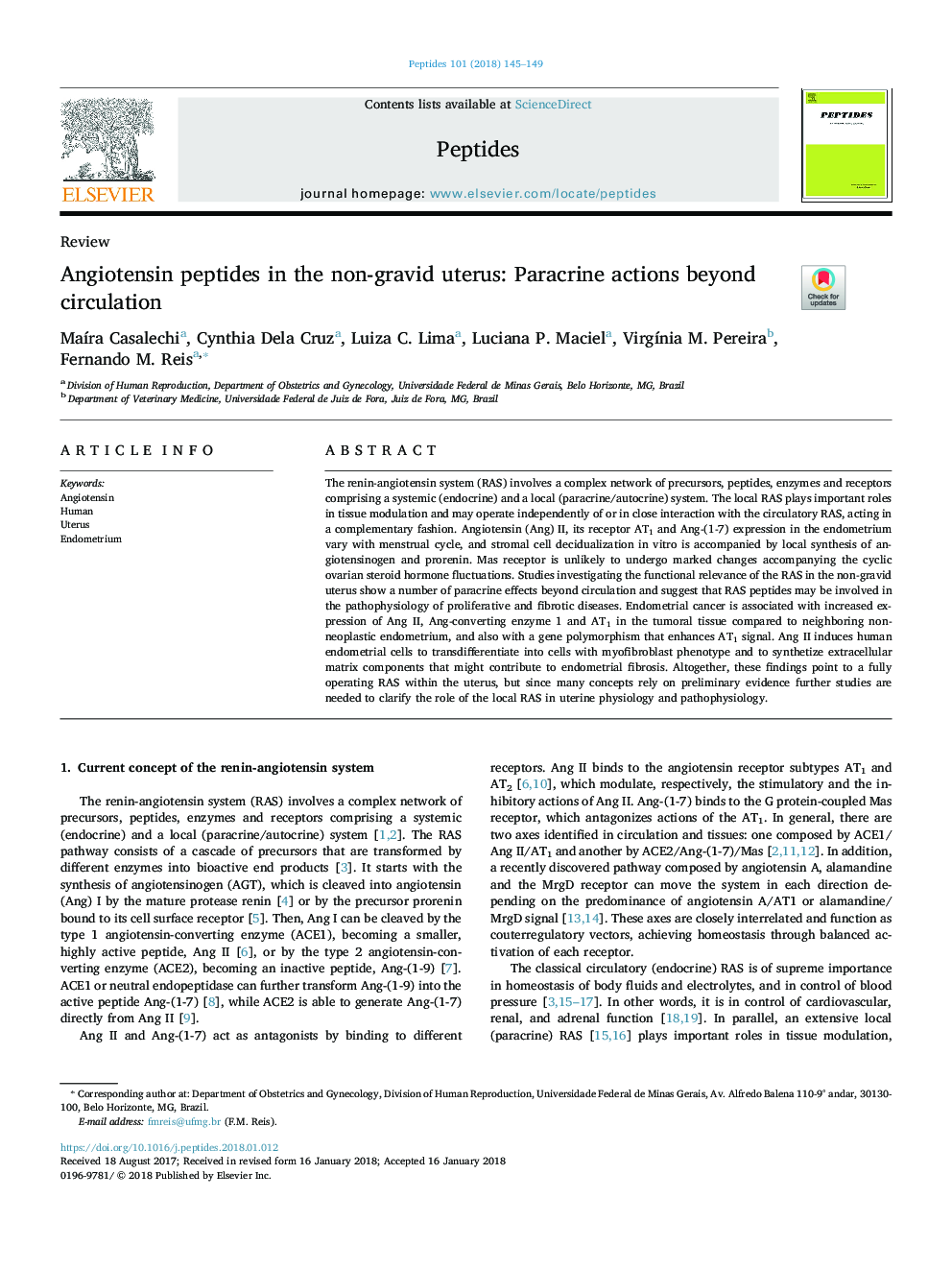| Article ID | Journal | Published Year | Pages | File Type |
|---|---|---|---|---|
| 8347419 | Peptides | 2018 | 5 Pages |
Abstract
The renin-angiotensin system (RAS) involves a complex network of precursors, peptides, enzymes and receptors comprising a systemic (endocrine) and a local (paracrine/autocrine) system. The local RAS plays important roles in tissue modulation and may operate independently of or in close interaction with the circulatory RAS, acting in a complementary fashion. Angiotensin (Ang) II, its receptor AT1 and Ang-(1-7) expression in the endometrium vary with menstrual cycle, and stromal cell decidualization in vitro is accompanied by local synthesis of angiotensinogen and prorenin. Mas receptor is unlikely to undergo marked changes accompanying the cyclic ovarian steroid hormone fluctuations. Studies investigating the functional relevance of the RAS in the non-gravid uterus show a number of paracrine effects beyond circulation and suggest that RAS peptides may be involved in the pathophysiology of proliferative and fibrotic diseases. Endometrial cancer is associated with increased expression of Ang II, Ang-converting enzyme 1 and AT1 in the tumoral tissue compared to neighboring non-neoplastic endometrium, and also with a gene polymorphism that enhances AT1 signal. Ang II induces human endometrial cells to transdifferentiate into cells with myofibroblast phenotype and to synthetize extracellular matrix components that might contribute to endometrial fibrosis. Altogether, these findings point to a fully operating RAS within the uterus, but since many concepts rely on preliminary evidence further studies are needed to clarify the role of the local RAS in uterine physiology and pathophysiology.
Keywords
Related Topics
Life Sciences
Biochemistry, Genetics and Molecular Biology
Biochemistry
Authors
MaÃra Casalechi, Cynthia Dela Cruz, Luiza C. Lima, Luciana P. Maciel, VirgÃnia M. Pereira, Fernando M. Reis,
